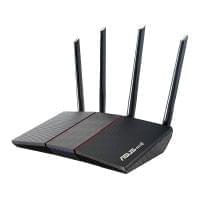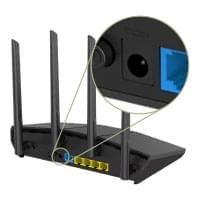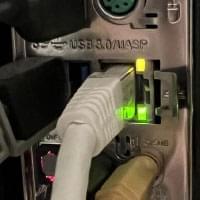Troubleshooting Guide
- Test your Internet connection on multiple devices. Try other computers, laptops, smart TVs, video game consoles, tablets, and smart phones connected to your network. If any of your other devices can successfully access the Internet, then it's most likely that your Internet connection is functioning. In this case the fault lies with the device that cannot access the Internet. Click here to troubleshoot a single device.
-
Restart your router. If the prior step confirmed that none of your devices have Internet access, you should restart your router.
2a. Locate your router.

2b. Find the power cable and disconnect it.
 Note: Please do not press your router's reset button. Doing so will revert it back to factory defaults and require the router to be set back up again.
Note: Please do not press your router's reset button. Doing so will revert it back to factory defaults and require the router to be set back up again.2c. Wait 3 seconds and then reconnect the power cable.
- Take a quick break. Please allow at least 3 minutes for the device to reboot.
- Try to access the Internet again. If your connection still isn't working after 3 minutes, please contact us for further assistance.
- Restart the device. Power off the device, wait a few seconds, and power it back on. Simply restarting a device is a surprisingly effective way to fix common errors.
-
Check the device's connection and settings.
Wired Devices
2a. Check physical connections.
Make sure that the device is plugged in correctly. Inspect the Ethernet port on the device as well as the network device (router or switch) at the other end of the cable.
Normally, a light near the port indicates a network connection is active. A flashing light indicates that the port sending or receiving data.

If the light is off, there may be something wrong with your Ethernet cable or Ethernet ports. Unplug and replug the cable. Try replacing the cable or try moving the cable to a different port on your switch or router.
2b. Check the device's settings.
Most network devices will automatically obtain the necessary configuration using DHCP. However, manual configurations are possible and the manner in which you set up your local network is up to you.
Wireless Devices
2a. Check the device's Wi-Fi settings.
Ensure that the device is connected to your local WiFi. Search for local networks and connect to your network's name.
2b. Move the device closer to your router.
Wireless signals weaken the further they are from their source. If possible, move the device closer to your router to see if the connection improves.
If this solves the problem, you may consider purchasing an additional access point to extend your wireless network's coverage.
Need Assistance?Our technicians are happy to assist you with just about any networking problem you may have.
Contact us to schedule an appointment with one of our technicians. Please note that on-site service fees will apply to all work done on your internal home network and devices.
Your Internet connection may appear to be slow for a variety of reasons. Try the following steps to improve performance:
1. Reboot Equipment. First, try rebooting your router and antenna power supply. Unplug both and plug them back in. Wait 3 minutes for the reboot to complete and then try again.
2. Reboot Computer. Next, try restarting the computer or device you are using.
3. Improve Signal. If you are working on a wireless device such as a laptop or tablet, try moving closer to the router to improve your WiFi signal strength.
If none of the above steps improve the speed, please consult our FAQ for more information or contact support for further assistance.
- Try multiple websites. Make sure that your Internet connection is working by visiting a few different websites or online services. If you can not access any website, your Internet connection may not be working. Click here to troubleshoot.
If just one site isn't working then there's likely nothing you or your ISP can do since the problem is occuring outside of our network. All you can do is either wait until it comes back online or try contacting customer support of the affected service.